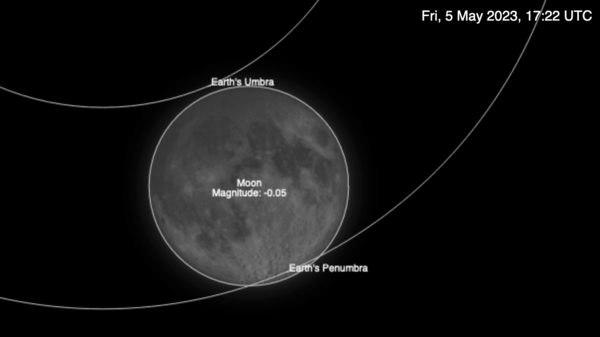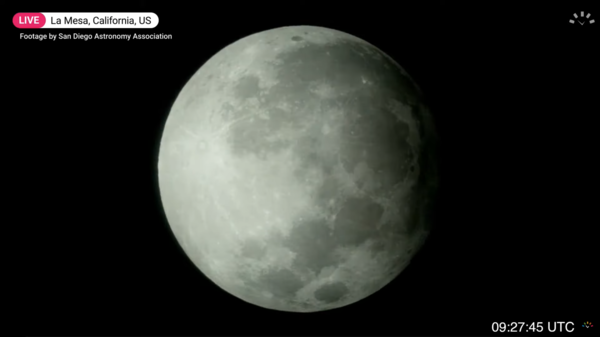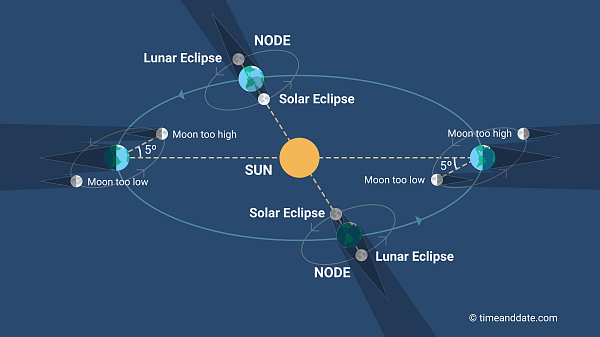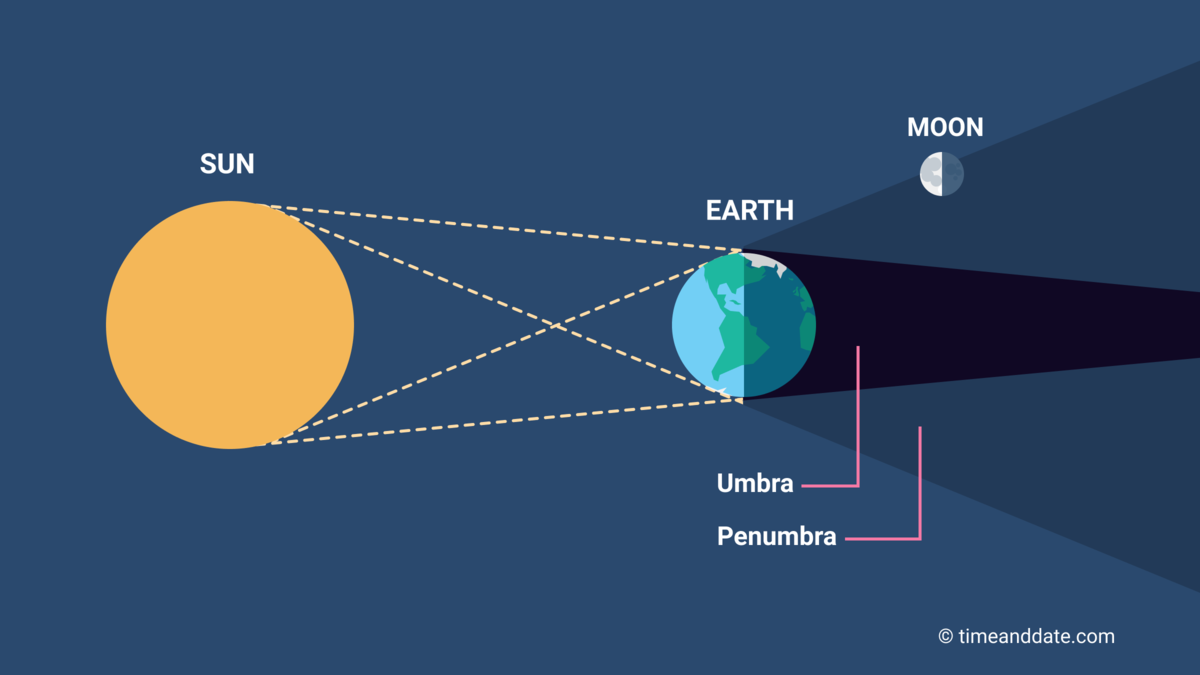What Is a Penumbral Lunar Eclipse?
A penumbral lunar eclipse takes place when the Moon moves through the faint, outer part of Earth's shadow, the penumbra. This type of eclipse is not as dramatic as other types of lunar eclipses and is often mistaken for a regular Full Moon.

This graphic shows the two large circular shadows that Earth casts into space: the inner umbra, and the outer penumbra. Here the Moon is covered by the penumbra, but not the umbra—making this a penumbral lunar eclipse.
©timeanddate
March 24-25, 2024: Micro Moon and penumbral lunar eclipse
A Not Very Deep Eclipse
Every lunar eclipse begins and ends with a penumbral stage. This is where the Moon passes through the light, outer part of Earth’s shadow, called the penumbra.
Often, the Moon also passes through Earth’s dark, inner shadow—known as the umbra—producing a partial or total lunar eclipse.
But sometimes, in around one out of three lunar eclipses, the Moon doesn’t reach the umbra: the penumbral stage is as deep as the eclipse gets. These events are called penumbral eclipses.
Not Easy to See
Because Earth’s penumbral shadow is light, it can be hard to spot as it moves across the face of the Moon.
The best time to try and catch it is around maximum eclipse, when one edge of the Moon may appear slightly darker than the other.
If a person was standing on the Moon’s surface during a penumbral lunar eclipse, they would see Earth block out some—but not all—of the Sun. (From their perspective on the Moon, they would see a partial solar eclipse.)

Earth’s penumbral shadow is not a single shade—as can be seen in this telescope view from timeanddate’s live stream of a penumbral eclipse in November 2020. The shadow across the Moon gradually darkens from the left edge, which is outside the shadow, to the right edge, which is closest to the umbra.
©timeanddate.com
Imperfect Alignment
A penumbral lunar eclipse occurs when the Sun, Earth, and the Moon are imperfectly aligned. When this happens, the Earth blocks some of the Sun's light from directly reaching the Moon's surface and covers all or part of the Moon with the outer part of its shadow.
Since the penumbra is much fainter than the dark core of the Earth's shadow, the umbra, a penumbral eclipse of the Moon is often difficult to tell apart from a normal Full Moon.


Lunar nodes are the locations where the Moon crosses the Earth's orbital plane.
Penumbral lunar eclipses can be partial or full. During a partial penumbral eclipse, only part of the Earth's penumbra covers the Moon's surface. This kind of eclipse is almost impossible to see.
During a full penumbral eclipse, on the other hand, the Earth's penumbra covers the entire face of the Moon. Very keen observers may then see the Moon turn a shade darker during the maximum of the eclipse.
Two Conditions
Two celestial events must happen at the same time for a penumbral lunar eclipse to occur:
- The Moon must be in the Full Moon phase.
- The Sun, Earth, and Moon must be nearly aligned, but not as closely aligned as during a partial eclipse.
What is a total lunar eclipse?
What is a partial lunar eclipse?
Not Every Full Moon Night
The reason we do not see a lunar eclipse every Full Moon night has to do with the inclination of the Moon's orbital path. The plane of the Moon's orbit around the Earth is inclined at an angle of 5° to the Earth's orbital plane around the Sun, the ecliptic.
The points where the two orbital planes meet are called lunar nodes. Lunar eclipses can only take place when a Full Moon occurs near a node.


Sun, Earth, and Moon are not perfectly aligned during a penumbral eclipse. (Not to scale)
©timeanddate.com
How to See a Penumbral Lunar Eclipse
Unlike solar eclipses, which can only be seen along a narrow path from a small part of the Earth, eclipses of the Moon can be observed all across the night side of Earth when the eclipse happens.
Penumbral eclipses that involve the darker portion of the Earth's penumbral shadow, however, are normally visible to the naked eye. Careful observers can usually see penumbral eclipses with a penumbral magnitude greater than 0.60.
The Moon's orientation in the sky depends on the observer's latitude. This means the eclipse will appear to play out in different directions depending on your location.




